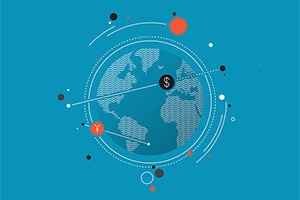 Now that I am back from the Commonwealth National Conference, I want to spend the next week or so outlining the ideas behind my speech there. The genesis of my presentation was the hundreds of conversations I had with financial advisors and clients over the preceding months. All had different questions and concerns—ranging from whether the U.S. was inevitably declining to whether the U.S. was the only safe place to invest. But over time, a common core concern emerged: the sense that somehow things were changing, as well as the growing worry that the answers we have relied on no longer fit in the new world we are moving into.
Now that I am back from the Commonwealth National Conference, I want to spend the next week or so outlining the ideas behind my speech there. The genesis of my presentation was the hundreds of conversations I had with financial advisors and clients over the preceding months. All had different questions and concerns—ranging from whether the U.S. was inevitably declining to whether the U.S. was the only safe place to invest. But over time, a common core concern emerged: the sense that somehow things were changing, as well as the growing worry that the answers we have relied on no longer fit in the new world we are moving into.
That groping for how to handle a new world was rarely expressed that way. Instead, people were struggling with the idea that established truths, ones they might have built their careers around, looked less truthful now than they did a decade ago. As we discussed each question, we could find answers to the particular concerns. For me, however, the growing sense that there was a deeper underlying disconnect made me go back to the basics. Per the Mark Twain quote, “It ain’t what you don’t know that gets you into trouble. It’s what you know for sure that just ain’t so.”
What do we know that isn’t actually so?
Looking back at history reveals a couple of ideas. Given the breadth of the questions we now have and the wide-ranging disconnects, any real attempt to address the question would have to be general, not specific. It would have to go beyond investing and even beyond economics. It would have to be something that had happened before, as there is nothing really new under the sun. And it would have to be something that made sense. After quite a bit of work, I found a way to tell the story that I believe makes sense: the world is changing, and it really could be different this time.
I know, I know. I normally use that as a laugh line, with the idea that things never really are different because truly they rarely are. But, looking back at history, there is one occasion in most of our lifetimes where the world really did change and when everything afterward really was different. There is both a historical precedent and a reason to believe the changes we are seeing now will result in a similar change, with similar consequences.
The world right now
To start off with, though, we will look at the world as it is right now. You can’t understand where you are going if you don’t know where you are. In subsequent posts, we will take a look at where we came from and how we got to where we are. That will illustrate exactly the change that took place and why the “different this time” moment got us to today. Finally, we will explore what is changing and why, and we will use that to derive a framework for why this again might be another different this time moment, the first in a couple of generations.
Are things different this time?
It’s not easy to decide if things are different this time, and it is almost always wrong to do so. But when so many things change and in the same way, then we need to at least think about it. The next several posts will explore just how the world has changed—and what that might mean for the future as the new world turns into the next world.


 Print
Print

